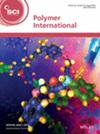Silma de Sá Barros, Bruno Las-Casas, Bárbara Pereira, Flávio A. de Freitas, Clodoaldo Saron
求助PDF
{"title":"从亚马逊地区油棕束纤维废料中开发可持续纤维素基材料","authors":"Silma de Sá Barros, Bruno Las-Casas, Bárbara Pereira, Flávio A. de Freitas, Clodoaldo Saron","doi":"10.1002/pi.6790","DOIUrl":null,"url":null,"abstract":"<p>Cellulose-based materials have been explored in several fields due to their abundance, performance, low cost and environmental benefits. The development of fiber-based products is highly attractive in countries with large agricultural areas and high production of agro-industrial waste. In Brazil, the waste from the palm oil industry stands out as a promising cellulosic source for biomaterials but remains underexplored. In the present study, various biomaterials such as palm bunch fiber, cellulose and cellulose nanofibrils (CNFs) were extracted from palm oil waste and characterized in terms of morphology, size distribution, crystalline structure, chemical composition and thermostability. Palm bunch fiber exhibited α-cellulose as the main component (41%), followed by hemicellulose (21%) and lignin (12%). Potassium (K) was the most abundant inorganic element found in nanofibrils. High-aspect-ratio CNFs were isolated using disc ultra-refining, with an average width of 21 nm and higher crystallinity compared to palm fiber and cellulose. Thermostability assays revealed that CNFs exhibited the highest residual weight at elevated temperatures (>500 °C), whereas palm bunch fiber and cellulose showed superior onset and maximum degradation temperatures. Overall, the distinct characteristics of these cellulose-based materials produced from palm oil waste highlight the potential of this agro-industrial waste as a valuable lignocellulosic source to develop sustainable materials for a wide range of applications. © 2025 Society of Chemical Industry.</p>","PeriodicalId":20404,"journal":{"name":"Polymer International","volume":"74 11","pages":"958-964"},"PeriodicalIF":3.6000,"publicationDate":"2025-06-09","publicationTypes":"Journal Article","fieldsOfStudy":null,"isOpenAccess":false,"openAccessPdf":"","citationCount":"0","resultStr":"{\"title\":\"Development of sustainable cellulose-based materials from oil palm bunch fiber waste from the Amazon region\",\"authors\":\"Silma de Sá Barros, Bruno Las-Casas, Bárbara Pereira, Flávio A. de Freitas, Clodoaldo Saron\",\"doi\":\"10.1002/pi.6790\",\"DOIUrl\":null,\"url\":null,\"abstract\":\"<p>Cellulose-based materials have been explored in several fields due to their abundance, performance, low cost and environmental benefits. The development of fiber-based products is highly attractive in countries with large agricultural areas and high production of agro-industrial waste. In Brazil, the waste from the palm oil industry stands out as a promising cellulosic source for biomaterials but remains underexplored. In the present study, various biomaterials such as palm bunch fiber, cellulose and cellulose nanofibrils (CNFs) were extracted from palm oil waste and characterized in terms of morphology, size distribution, crystalline structure, chemical composition and thermostability. Palm bunch fiber exhibited α-cellulose as the main component (41%), followed by hemicellulose (21%) and lignin (12%). Potassium (K) was the most abundant inorganic element found in nanofibrils. High-aspect-ratio CNFs were isolated using disc ultra-refining, with an average width of 21 nm and higher crystallinity compared to palm fiber and cellulose. Thermostability assays revealed that CNFs exhibited the highest residual weight at elevated temperatures (>500 °C), whereas palm bunch fiber and cellulose showed superior onset and maximum degradation temperatures. Overall, the distinct characteristics of these cellulose-based materials produced from palm oil waste highlight the potential of this agro-industrial waste as a valuable lignocellulosic source to develop sustainable materials for a wide range of applications. © 2025 Society of Chemical Industry.</p>\",\"PeriodicalId\":20404,\"journal\":{\"name\":\"Polymer International\",\"volume\":\"74 11\",\"pages\":\"958-964\"},\"PeriodicalIF\":3.6000,\"publicationDate\":\"2025-06-09\",\"publicationTypes\":\"Journal Article\",\"fieldsOfStudy\":null,\"isOpenAccess\":false,\"openAccessPdf\":\"\",\"citationCount\":\"0\",\"resultStr\":null,\"platform\":\"Semanticscholar\",\"paperid\":null,\"PeriodicalName\":\"Polymer International\",\"FirstCategoryId\":\"92\",\"ListUrlMain\":\"https://scijournals.onlinelibrary.wiley.com/doi/10.1002/pi.6790\",\"RegionNum\":4,\"RegionCategory\":\"化学\",\"ArticlePicture\":[],\"TitleCN\":null,\"AbstractTextCN\":null,\"PMCID\":null,\"EPubDate\":\"\",\"PubModel\":\"\",\"JCR\":\"Q2\",\"JCRName\":\"POLYMER SCIENCE\",\"Score\":null,\"Total\":0}","platform":"Semanticscholar","paperid":null,"PeriodicalName":"Polymer International","FirstCategoryId":"92","ListUrlMain":"https://scijournals.onlinelibrary.wiley.com/doi/10.1002/pi.6790","RegionNum":4,"RegionCategory":"化学","ArticlePicture":[],"TitleCN":null,"AbstractTextCN":null,"PMCID":null,"EPubDate":"","PubModel":"","JCR":"Q2","JCRName":"POLYMER SCIENCE","Score":null,"Total":0}
引用次数: 0
引用
批量引用


 求助内容:
求助内容: 应助结果提醒方式:
应助结果提醒方式:


